 Originally published September 4, 1998, in Comics Buyer’s Guide #1293
Originally published September 4, 1998, in Comics Buyer’s Guide #1293
The past couple of columns, we’ve discussed aspects of, and moments in, comic history. I rattled off about a dozen or so examples of what I perceive as some of comics’ most “memorable moments,” all of which occurred—as will come as a great shock, it seems, to many modern readers—at a time that pre-existed not only their interest in comics, but their birth.
What we’re seeing, when we witness the sort of shortsighted displays as Wizard‘s 25 most memorable moments in comics history, almost none of which occurred earlier than 1979, is the sort of massive blind spot which is rampant throughout not only comics readership, but throughout much of the country. It is the belief that history doesn’t matter. More—that it’s boring. Irrelevant. That whatever happened before, it can’t possibly compare in quality, style or importance with what’s happening now.
It’s the mindset that is as sweeping in its scope as to allow for the colorizing of black and white films because today’s audience won’t watch them, to allowing for some organizations to try and (in some cases, successfully) sweep the Holocaust under a rug in hopes that people will forget—and many of them will.
Let’s get a disclaimer out of the way: I’m not talking about you, of course. It’s someone else, of course. It’s always someone else. You, naturally, are fully informed. You’re up to date. You know not only where comics are going, but where they’ve been. If I mention the name Hogarth, you can rattle off his accomplishments. You can discern a Raboy illustration at a glance. You know precisely who Bill Finger worked with, you can name all the original members of the Justice Society, you’re aware that there used to be a Daredevil who had kid sidekicks named “The Little Wise Guys,” you’re fully cognizant of who Superman swiped the Fortress of Solitude concept from, you know the difference between Gardner Fox and Fox Mulder—heck, you even know what Stan Lee’s real name is. You da man. I’m not talking to you, you’re in the clear. It’s the other guy. It always is.
When I first started reading comics, back when dinosaurs roamed the earth and ran mom-and-pop stores snarling, “You gonna read those or buy ’em?” I was fully aware that I had come into the game way late. It was the 1960s, and the fact that comics had a long and illustrious heritage was thrust in my face constantly.
The probable origin of this awareness on my part was from the publishers themselves.
As a kid, I knew nothing about the characters’ backstories. I hadn’t been reading comics (or much of anything yet) during the Silver Age rebirth of the DC line, and when I was very young my dad wouldn’t let me read Marvel Comics because he thought the main characters were ugly looking (which, let’s face it, they were). I knew so little about the heroes that when Superman was described in the TV series as a “strange visitor from another planet,” I figured that meant he was here on a temporary basis. He was a visitor, after all. I thought he’d be going home someday. I didn’t know he was here to stay until I saw “Superman on Earth” and said, “Oh. Well, I guess there’s no going back, huh?”
I began reading DC Comics not knowing anything about the origins of the vast majority of the characters. Then I started seeing ads for comics that featured “Secret Origins” of the assorted heroes, and I realized that the characters had not simply sprung full-blown into the comics with no background whatsoever. They had been “normal” at one point, or had undergone some sort of “birthing” of their powers which lead to them doing the strange and wonderful things they did. And the “Secret Origins” comics spelled everything out.
But there was more available than just that. The summertime was a major research time for me, for once upon a time, the summer wasn’t an occasion for a whole bunch of annuals which featured interconnecting or uniformly themed stories which drove fans nuts. Instead, the summer was the time for the 80 Page Giants, one of the great joys of my youth.
Yes, yes, I know that in earlier decades you’d get massive editions for a dime, but I wasn’t lucky to be around for those. Instead I was perfectly happy with the 80 Page Giants. For 25 cents, a mere quarter of a buck, I would get 80 pages worth of stories featuring earlier adventures of Superman, Batman, or Superman and Batman together, or the Superman family, or various other characters. This just fed into my desire to find out more about where everyone had come from. When I was a kid, there were certain exciting “sign posts” of each year. The arrival of the Christmas catalogue from Sears was one, for instance. But another was the first appearance of that year’s crop of 80 Page Giants.
By the time I was a bit older, my dad had relented on his Marvel Comics ban and I started picking up the new titles. But I had little feel or understanding for the characters as they were at that point. Fortunately, Marvel was also publishing its own line of reprint comics, specifically (I can only figure) to address the needs of exactly fans such as myself. There was the unwieldily named Marvel Collector’s Items Classics, later shortened to Marvel’s Greatest Comics, which reprinted early adventures of the Fantastic Four, and Marvel Tales which reprinted Spider-Man stories.
These comics also featured Dr. Strange, the Human Torch, the Mighty Thor, and the Incredible Hulk. The first Hulk story I ever read was a reprint of Incredible Hulk #6, a story so off-beat (the gangsterish, tough-talking Hulk sprouted Bruce Banner’s head, then defeated the Metal Master and said thanks to the Teen Brigade) that it formed my earliest impressions of the character. (Indeed, it breaks me up when Marvel bigwigs speak now of returning the Hulk to his “roots,” defined as the savage and/or mute brainless Hulk—totally oblivious to the fact that the Hulk’s true roots are nothing like that at all.) All the gatefold covers in the world can’t compare to the inexpensive first-hand introductions that I received to the characters’ histories.
These comics fired my further interest in learning what had gone before. As I got older, I began to seek out more and more about the roots of comics. I got my hands on every book I could. A trip to the library got me Jules Feiffer’s The Great Comic Book Heroes. That book gave me my first truly full exposure to the Golden Age of Comics, stories that far predated anything I’d been reading in the 80 Page Giants. Very early stories and origins of the Spectre, Hawkman, etc. It was also, if I recall correctly, my introduction to the Spirit. I found the art style much scratchier than what I was used to, but it didn’t matter. It was where the characters had come from. That gave it weight and made it interesting to me.
I didn’t stop there. In the comics, I saw ads for a humongous trade paperback about the origins of comics by one Jim Steranko (the man who, it is said, was Jack Kirby’s basis for Mister Miracle). I got it, read it cover to cover, over and over, as well as its follow-up volume. Crammed with tons of information about characters that I had never heard of but wanted to know about, and lavishly illustrated. More were promised, but never delivered. That was okay.
I wasn’t sitting on my hands; I was busy reading and re-reading All in Color For a Dime, edited by Ðìçk Lupoff and Don Thompson, featuring all manner of essays about the heroes of the Golden and Silver Age. In the meantime, there were huge hardcovers available that were celebrations of the history of my main guys, Batman and Superman. Batman from the 30s to the 70s, and Superman from the 30s to the70s. I saved up my allowance and bought them both, and couldn’t get enough of them. In fact, I only just now found out that there was a companion volume, similarly titled, about Captain Marvel. How the hëll I missed it, I don’t know.
In short, there was a wealth of material available to me, to all the new fans who wanted to know the Way Things Were.
No more.
A few years ago, before Marvel comics discontinued its last reprint book, Marvel Tales, a retailer told me of how a kid came in, thumbed through the book and made a face. “This artist is just a Ron Frenz clone,” announced the young customer and tossed the Steve Ditko-drawn comic back into the rack.
Reprint volumes still exist, but not in the cheap, easily accessible manner that they did before. For the most part, they’re aimed at the older readers as a nostalgia trip rather than at the new readers as a way of informing them. But why should they be informed? They don’t know, they don’t care, and they don’t care that they don’t know.
The broad and long-term destructive effects of ageism next column.
(Peter David, writer of stuff, can be written to at Second Age, Inc., PO Box 239, Bayport, NY 11705.)
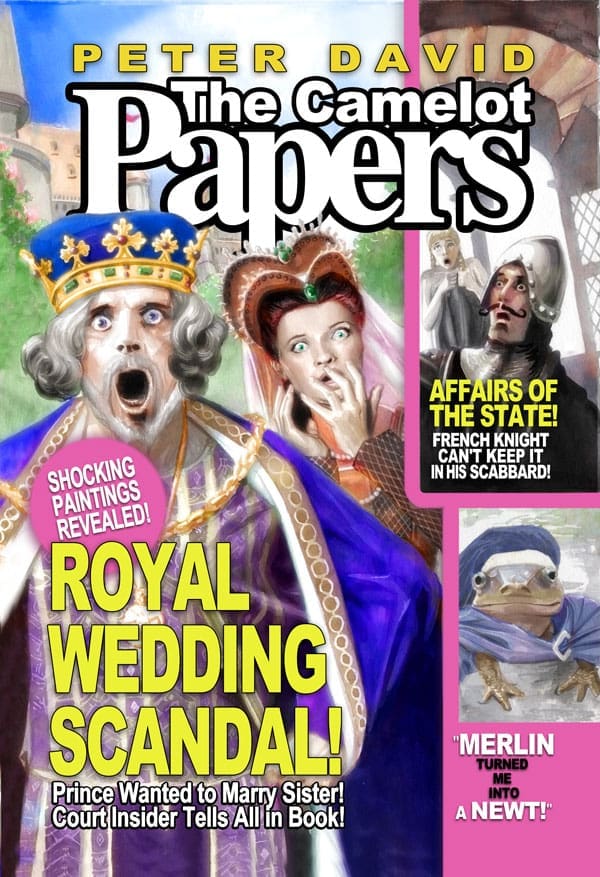
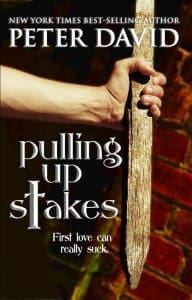
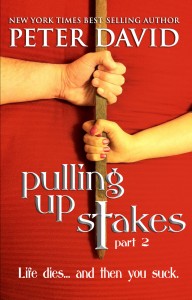
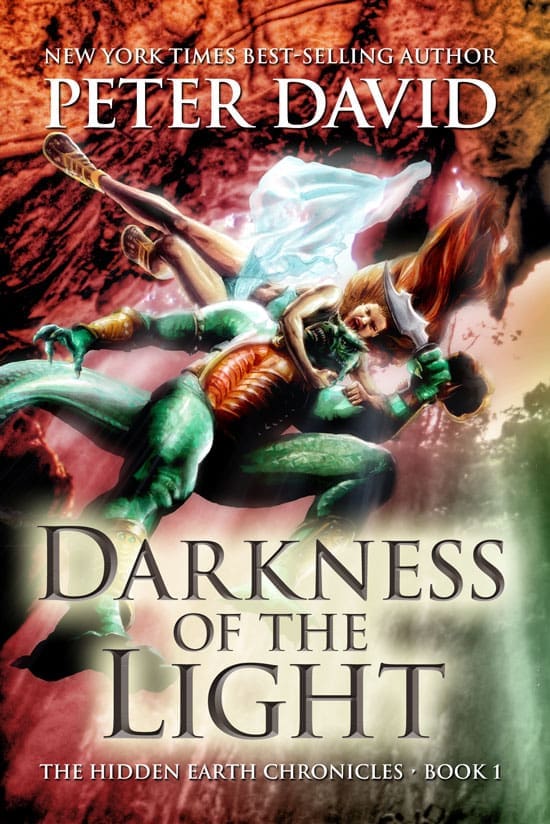
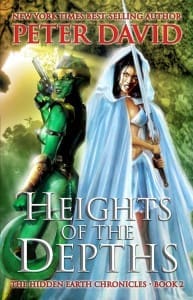
Peter, I’m amazed at how many parallels I see with your childhood and my own. Those 80 page giants were manna from heaven for a kid my age. And I borrowed The Great Comic Book Heroes from my local library so many times that if you looked at the card tucked into the pocket in the back of the book, one entire side was my name. Of course books like All in Color for a Dime and Steranko’s two-volume history were invaluable in terms of exposing me to characters and titles I had never heard of. Incidentally, I also loved the 100-page comics that DC published in later years, not only because of the golden age stories they threw in, but also because of those rare Quality comics reprints.
Just out of curiosity Peter, what was behind your father’s Marvel ban?
The timing of these reprint articles is also amusing due to some discussions I’m having in the Star Trek Online forums. It seems a number of “longtime Star Trek fans” are enraged with JJ Abrams for “ruining Star Trek forever” with the 2009 reboot movie, because it “betrays what Star Trek stands for” – that is, peaceful exploration, cerebral storylines, and no conflicts between the main characters. And their basis for this? They’re “longtime fans”, all right – they grew up watching TNG.
Those of us who grew up with TOS, and came to TNG and its sequelae as adults, can only shake our heads (or shake our canes and yell at them goldurn kids to get off our lawns). However, reading these articles has given me a bit more insight into exactly why none of what I say on the topic seems to sink in…
I can’t say I’m enraged by the reboot, but I certainly have no need of it; I was (mostly) perfectly happy with Star Trek as it was.
But as I said the other day, having finally seen the trailer for the new film before IM3, it looks 100% Michael Bay and 0% Gene Roddenberry, and I’m not sure why that would interest any long-time Trek fan.
Wasn’t sure going in, but the ’09 film was OK. My main beef was not so much with the story – that worked for me – as with the cinematographic techniques used. Enough with the shaky-cam already. Oh, and, lens flare. Otherwise, I didn’t mind. But if half of what an insider claims is true about the new one (and his scoops are usually right), I’m staying home.
Just over a month ago, I walked into my local comic book shop and asked the clerk if he had heard that Carmine Infantino had died.
He said “Who?”
It inspired me to write the following. I may have some facts wrong. My memory was my source for most of what I wrote about. But I just had to sit down and write it out:
http://fmtfluver.deviantart.com/journal/Carmine-Infantino-365372885
Oh, and if you’re under 18, do NOT go wandering around this website. It’s called “deviantart” for a reason.
When I give my “Super(hero) S&M!” lecture at XCon World next weekend in South Carolina http://www.xconworld.info/ one of my examples is the cover to THE SPIDER-WOMAN 6. It fits so well…
The same, of course, in music – i’ve said for years that rock music didn’t exist until thirteen minutes before you discovered it for most people – always, to some extent, but especially these days with Clear Channel (ptui) strangling originality and suppressing most of the artists who would have broken through on local radio, once upon a time.
I just told someone a few hours ago that today was a bad day for lovers of old sci-fi, horror and fantasy. When asked why, I said that less than a year after Bradbury, we’ve lost Harryhausen.
Neither name meant a thing to the guy I was talking to and he describes himself as a major sci-fi, fantasy and horror buff. He’s also in his early 30s, so the age difference between isn’t even a full decade.
Digressing on the digression, the Spectre, yes, God’s avenging angel, an almost incomprehensibly powerful character who can practically juggle planets and who goes after … street thugs? There’s a fair fight for you. Where was he when Doomsday was having his little walkabouts?